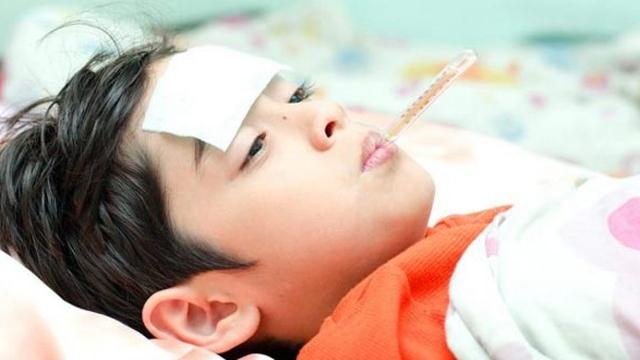Methods of dealing with infant fever, in fact, fever is the body's natural response to bacteria and viruses that usually enter the body, which is a useful defensive mechanism if it is carefully treated.Review.
In rectal measurements, up to 38 can be considered.2 degrees Celsius.It is no longer recommended to use a glass heat scale due to the toxic effects of mercury if it is broken in all measurements, whether in the rectum or under the armpit.The values that reach 37 are considered.2 degrees Celsius in the armpit measurements and 37.8 ° C in ear measurements up to 38.2 degrees Celsius in rectal measurements natural.We should not forget that room temperature and thick clothes also increase body temperature.In armpit measurements, care must be taken that the skin is dry and that the fissure touches the armpit for a sufficient period.The measurement of the wet armpit may lead to wrong low results.

Methods of dealing with infant fever
The most common causes of short -term fever that lasts from 3 to 5 days are the upper and lower respiratory infections, digestive infections with diarrhea and vomiting, and urinary tract infections, especially for girls.Regardless, otitis media, pneumonia, meningitis, rheumatic diseases and malignant diseases can cause fever.Children may also suffer from a slight fever after some injection and during periods of teething.
All children under the age.
How to deal with childhood fever
If your child has a fever for more than 24 hours if he is less than two years old, and for more than 3 days if he is older than two years old
If there are signs of fluid loss, such as dry mouth, lack of tears, collapse of eyeballs and fools, and low urine production, consult a doctor without delay.
It is normal for the child to tremble when his temperature rises.Thick clothes increase the child's high temperature.For this reason, the child should not wear heavy clothes, and not to cover himself on the pretext that he is cold.The room temperature in which the child with fever is located between 21-22 degrees.The fever increases sweating and breathing rate, which increases fluid loss.The child must receive a lot of fluids.
How to deal with childhood fever
If the fever is very high, you can wear warm clothes (29-32 degrees) or rarely shower, but do not damage the child with a towel or a cold wet, or put the child directly under a cold shower.In addition to these applications, it can be used in drinks and antipyretic eggs in doses suitable for the age and weight of the child.One point that must be remembered is that aspirin should not be used as a fever of children.
Up to 30 % of families do not realize that their child suffers from fever at the time of fever.It is the most common in children between the ages of 6 and 5 years.Fever is usually higher than 38 ° C.Although the febrile seizure is a very frightening condition for families, it is not a case that really hurts the child.Contrary to common belief, a febrile seizure does not cause epilepsy, paralysis, or death.A child with a febrile attack may suffer from cramps, blood spots, bruises, eye rotation, and loss of consciousness.The first thing to do in this situation is the commitment of calm.It is convenient to know that this position will not always cause the child to harm.In such a case, the child must be prevented from beating right and right.You can carry your child on your lap and install it in a back position and head to one side and a little bottom.The application to the nearest health center is the right step to keep the airway open.However, 90 % of fever attacks stop automatically within 10 minutes.
